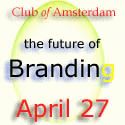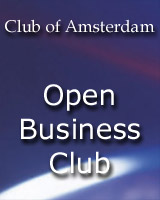
Technology Brands Meet the Bottom Line
| Technology Brands Meet the Bottom Line By Robert Nelson See also: http://www.brandchannel.com Introduction The technology industry’s Chief Marketing Officer (CMO) Council last fall released its Measures+Metrics study, which showed branding at the bottom of the barrel when it comes to measuring marketing performance. Technology CMOs also said that brand equity is one of the least reported measurements to senior management. Following the heady days of the late 1990s when money was plentiful and brand was king in the technology kingdom, branding has deflated on the same curve as bottom lines. What’s behind the slide in brand importance within the tech industry? There are three key reasons why companies are not spending a lot of time or money on developing their brands: economic climate, lack of measurement techniques and lack of understanding about what branding is. […] Optimizing Your Brand Marketers today face far greater demands for accountability and proven return on investment than ever before. There is increasing pressure from the executive team to measure and articulate the benefits of each marketing program. Given the demonstrated lack of understanding of branding and brand issues within high technology company executive suites, brand support can only be earned by clearly linking brand performance with company performance. Here are a few suggestions for getting brand back into the technology marketing ball game: Redefine Branding: Think holistically. Branding is a business strategy that impacts the company and its long-term revenue stream. Brand is the promise you keep, not just make. That means the CEO is the chief brand steward and each and every employee is the brand. In technology companies, the corporate brand most often is your brand. Every minute of every day brand touchpoint connections are made. It’s your job to work with the executive team to create the promise and the framework to deliver on the promise to delight customers. There is no higher calling. Optimize Your Brand: Keep promises: Marketing has the responsibility to ensure that the customer experience with the brand is always superior. That’s how brand promises get kept. Use research to monitor your brand touchpoints to see if the promise is being kept. If you find brand gaps between what you promise and what you deliver, prioritize the gaps and develop new strategies and programs to close the gaps. Then, continue to monitor internally and externally and make adjustments as required to meet the ever-changing needs of your customers. Demonstrate Results: Internal touchpoint metrics can be put in place. Customer service, shipping, and other internal functions can be measured against keeping the brand promise and delivering a superior customer experience. This is the front line in brand promise delivery, so choose wisely and reward generously. Use customer brand experience research to benchmark and track both internal and external touchpoint performance and to adjust strategies and programs. Most importantly, focus on brand loyalty and retention measurements. Awareness, associations, and quality perceptions need to be measured and managed as key components of long-term brand equity, but the brass ring is brand loyalty. Promises kept equals delighted customers who not only stay with you as long as you keep your promise, but also tell potential customers about you. Happy, loyal, retained customers continue to fatten the bottom line for a long time. And, they help you acquire new customers at a much lower cost. Make sure you have a system in place that captures retention value. | |
 |
News about Branding

Great Branding Is Rooted in Strategy
By Vincent Grimaldi
The “magic” behind successful brands can be achieved through balancing short- and long-term planning.
Many organizations that display a dynamic brand name see branding as a subset of marketing management. This is demonstrated by an organizational design that puts the customer at the center of the business. Those organizations recognize that marketing is the name of the game: If you don’t sell, you aren’t in business.
Unfortunately this by no means describes all organizations. For sure, marketing has made progress in boardrooms lately. The competitive pressure and the fast-changing environment of the last decade or so have pushed many more organizations to be in tune with their market, e.g., TI in the US, Renault in France. Nevertheless, there are still executives who declare that: “marketing is not a priority for us.”
Although those skeptics would be interested in increasing sales and profitability durably, they resist the idea that the marketing function can help them reach that objective. In fact, they may confuse long- and short-term planning.

Europe, Inc. – Re-branding Europe
By Lucie White, Mark Purdy and Liz Padmore
Improving Europe’s image – dispelling some of the fear and mistrust and giving more positive messages – goes hand in hand in hand with other economic reforms and changes, this article from the November 2004 issue of Business Management journal argues. As an underpinning part of the progress of the European Union (EU), building Europe’s image could be a potentially huge step forward both in terms of changing attitudes within the EU and perceptions of it from the outside.
News about the Future

Wrist video display for overhead UAV real-time video feeds
[UAV = Unmanned Aerial Vehicles]
Last Summer, the Israeli company Tadiran Spectalink revealed one of the more successful information tools used in recent Israeli counter-terrorist operations. The system, called V-Rambo (Video Receiver And Monitor for Battlefield Operations), is a 3×3 inch color video screen, with a wireless communications link to overhead UAVs. The battery powered system is worn on the wrist and provides the user with live video (at 30 frames a second) from the UAV overhead. The receiver, battery and antenna are carried on the soldiers web equipment or jacket. V-Rambo can also display digital maps. The Israeli manufacturer is trying to sell the system to foreign armed forces, most likely American. V-Rambo proved very useful in counter-terrorist operations, allowing small groups of soldiers to be led by officers or NCOs equipped with a real time video of the surrounding terrain. This put enemy fighters at a big disadvantage, and reduced the risk of friendly fire incidents. A vehicle version of V-Rambo uses a five inch color screen. V-Rambo can, of course, accept video feeds from any ground or air based source.

Winner of the 3rd Peugeot Design Competition
Following the vote of internet-users and journalists, the Peugeot jury declares the Peugeot Moovie, designed by André Costa (Portugal) winner of the 3rd Peugeot Design Competition.
This year’s subject:
After the future of 2020 and back to the future, this year’s subject is a basic thinking about a future that is nearer, more accessible and concrete. Imagine a vehicle that satisfies your tastes, your needs, your dreams, to your own specifications. Design a car that brings together your wishes, your interests and your feelings for cars. Create, innovate!
Next Event: Wednesday, April 27

the future of Branding
Wednesday, April 27, 2005
reception: 18:30-19:30, conference: 19:30-22:15
location: PricewaterhouseCoopers, Prins Bernhardplein 200, Amsterdam [next to Amstelstation], free parking.
Goos Geursen: Branding is something we did in flatland
Colby Stuart: The Evolution of Branding
Moderated by Sjirk van der Goot
Navigating in a Rough Sea
Navigating in a Rough Sea
by Franz Tessun, Future Thinking & Training
Decision Making in Complex and Uncertain Business Environments
This paper shows the need of a totally different thinking. There are three sectors of thinking:
a) network thinking
b) future open thinking
c) strategic thinking.
| It will be shown that only the combination of these three parts of thinking is able to deal in an efficient and economic way with the future and that the combination is necessary for making decisions in a complex and uncertain environment (Navigating in a Rough Sea). More, the markets and customers are changing so fast and a lot of trends tell us that the markets and demands will change quicker and quicker so that we cannot work anymore with our old traditional decision making instruments. Some examples will be shown where you can see how to handle with complexity and uncertainty in different decisive situations. One of the most difficult and challenging questions is to recognize the risks and crisis earlier than the competitors. An even difficult question is to find the opportunities in the markets and how to use them. These questions will be answered with an early warning system. This early warning system will help to think in alternatives. You can “fore think” a lot of opportunities and risks in the markets using a strategic early warning system. |
| The systematic approach can be supported by the Future Scorecard which is explained in detail in this paper. |
| Why should we deal with future? Although the mankind has been interested in the future for centuries and has in- vented countless methods and procedures for purportedly forecasting the future, to the present day it has not succeeded in making the future predictable. You cannot know the future and it remains unforeseeable, which is demonstrated by all the (wrong) forecasts of recent years. Nevertheless, the managers are forced to shape the future here and now to prepare actively their enterprise for the uncertain future. How can this dilemma be solved? How can an enterprise react on the increasing complexity of its environment shortly described with keywords like globalization, market saturation, short product life cycles? How can an enterprise control the consequences of an increased complexity of markets, of product and technology development and of socio-cultural and political environment? The complexity deposits in an accelerating dynamic, in short following trends and in a high intensity of change. The answer to these questions is: we can and must create the prerequisites for preventive actions through preventive thinking. The strategic future oriented business management plays a more and more important role in a world which is labeled by turbulences and disruptive structures, because the experiences of the past and the presence play a totally unimportant role. The change cycles of business success potentials and established brands are becoming shorter and shorter. The enterprise will loose the competition, if its managers are not able to identify the essential change drivers very early and if they are not able to influence positively these drivers for its own interest. |
Summit for the Future Report 2005
Summit for the Future Report 2005
The Club of Amsterdam released the Summit for the Future Report. You can download it for FREE [190 pages, pdf, 2,77MB]:
https://clubofamsterdam.com/2020/10/27/summit-for-the-future-2005/
Recommended Book

Wordcraft: The Art of Turning Little Words into Big Business
by Alex Frankel
“Five little words: BlackBerry, Accenture, Viagra, Cayenne, e-business. Two of the words are appropriated (BlackBerry and Cayenne); two are completely made up (Viagra and Accenture); and one (e-business) is a composite word made of a word and a letter that already exist. . . .These five words are the characters in this book.”
Words shape and move the modern marketplace; they are at once ubiquitous and invisible. But where do words such as Saturn, PowerBook, and Tylenol originate? How did we come to “xerox” our paperwork and “have a cup of Starbucks”? Which names work, and why? For journalist Alex Frankel, what began as an exercise in curiosity – tracing the evolution of a handful of the most successful brand names from the marketplace to their places of origin – resulted in a year-long journey in which he gained access to a previously undiscovered world of forward-thinking creatives: professional namers, the unique group of marketers responsible for inventing words that ultimately become a part of our everyday vocabularies.
Prospects of E-Content in Europe
Prospects of E-Content in Europe
By Peter A. Bruck International Center for New Media, Salzburg, Austria
[an excerpt from the book: E-Content – Technologies and Perspectives for the European Market published by Springer]
Prospect: Interactive media in a community and cultural context as high tech transfer
From the very beginning, the promise of the digital technology has been twofold: to make cultural things and media products cheaper to produce, transmit and receive, and to make the means of technologically mediated communication and information easier to use.
While the technology has kept the promise, it has failed the grass roots expectations rampant among the early Internet pioneers. Rather, the structurally favoured players and big companies have moved in and the “well of free and global interaction and communication” has been spoiled by E-Commerce, pornographic sites, and spam marketing waves. Nonetheless, interactive media play a critical role in the development of communities and in the cultural arenas, providing depth to industry markets, fuelling in-novation in creative contents, and functioning as training grounds for emerging producers.
In most urban areas of Europe, a significant number of community portals and internet service providers have set up operations and maintained their position as sources of streams of innovation in areas as diverse as virtual reality web, online services, and public multimedia installations. Indeed, some have become a global benchmark for cultural and social policy analysts interested in online community organisations and youth cultures. A major source of their attraction within the community market is a focus on training and infrastructure support mixed with sometimes strong ideological commitments and overt political ambitions. Many of these operations have been set up by students or graduates from universities or other training institutions of higher education and have kept those ties. One can see here a form of hidden technology transfer from the academic research and development community into new cultural usages and/or innovative application services platforms. Here, the adoption of new tools and technologies in content creation is fuelled by the organisational requirements and the community policy objectives.
Virtual community or heritage projects might serve as first entries and connections to innovative cultural institutions and municipal services might play catalytic roles in market development. The community “shop-front” interactive media rival the initiatives for community museums and centres for collaborations linking industry, the education sector, and SME institutions. Local and regional events might offer the opportunity to get larger grants, and the participation in public debates the necessary profiles.
Identifying key aspects of these developments, one can say that traditional cultural institutions play an important role in industry development through their functions of producing digital screen and interactive regional education programmes for schools or by adding innovation to the networked distribution of digital contents. The commissioning and collecting of new media works – and thereby supporting and credentialling digital content creators – appears equally important and is being done by the many digital interactive festivals. Finally, the establishing of international linkages and networks can serve as a low cost way for technology and tools training and exploitation.
The importance of the collaboration of university institutions with creative community and arts centres lies in the low cost innovation flow from research to implementation and from tool experimentation to innovative cultural practice. This is a different type of technology diffusion, which builds on the low commercialisation of the two sectors and their linkages and exchanges. Technology research institutions and cultural institutions thus take part in digital content industry development through providing an occasion and a place for cultural production, venues, and commissioning platforms for creative research and development in areas as diverse as performing arts or music festivals. Here, we can see an inculturation of technology, which is more profound than the computerisation of leisure time of the European youth through the game boy or consoles of the newest high performance bit rate.
What is developing here are platforms for young developers and creators who can use the new media technologies and tools with the highest of proficiencies and skills, and who become inventors both on the cultural as well as the technological side of multimedia. A two-way movement of people, ideas, skills, and tech innovation takes place as part of not-for-profit activities in the cultural and community arenas and the RTD world of information technologies. The links to the commercial creative content industries develop with success and a record in innovation. Environments in which such interactions and engagements can occur become important factors in nurturing creativity and innovation in content development.
Club of Amsterdam Agenda
| Club of Amsterdam Season 2004/2005 | |
| .April 27, 2005 | the future of Branding |
| .June 1, 2005 | the future of Robotics |
| .June 29, 2005 | the future of Philosophy |

Club of Amsterdam Open Business Club







Customer Reviews
Thanks for submitting your comment!